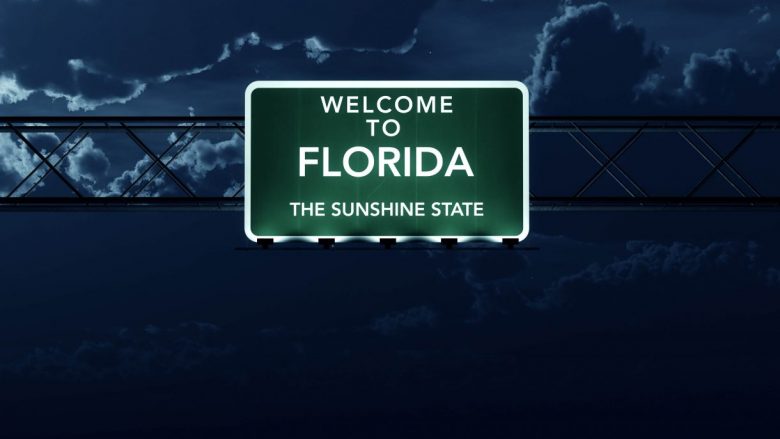Did you know that in 2014 there were 344,240 recorded motor vehicle crashes in the state of Florida alone? The Sunshine State, like many other states, compile yearly reports citing the number of crashes, their causes, the resulting injuries and much more. Why is this information useful? Well, we are strong believers that if you have the facts, you can formulate educated opinions that result in educated decisions. Educated lawmakers influenced by the conviction of educated drivers result in safer roads (we hope). Let’s dig into the data!
Use eTags© to Quickly Complete Your DMV Service. Renewals, Title Transfers and More, All Online!
The Florida Department of Highway Safety and Motor Vehicles (FLHSMV) compiles the Crash Summary Report annually for their residents, lawmakers, and media outlets to review. The data is broken out into several useful segments which we are more than happy to help you derive meaning from. Let’s begin with county specific data:
Counties with HIGHEST Crash Incidents in 2014
| County | # of Crashes | # Registered Vehicles (excluding boats) | % of Crashes to Registered Vehicles |
| Miami-Dade | 60,173 | 1,853,131 | 3.25% |
| Broward | 34,834 | 1,441,061 | 2.42% |
| Orange | 26,427 | 1,237,305 | 2.14% |
| Palm Beach | 24,304 | 1,141,067 | 2.13% |
| Hillsborough | 23,026 | 1,096,358 | 2.10% |
Counties with LOWEST Crash Incidents in 2014
| County | # of Crashes | # Registered Vehicles (excluding boats) | % of Crashes to Registered Vehicles |
| Lafayette | 29 | 9,599 | 0.30% |
| Liberty | 79 | 8,896 | 0.89% |
| Franklin | 84 | 12,656 | 0.66% |
| Union | 114 | 14,339 | 0.80% |
| Calhoun | 134 | 15,491 | 0.87% |
Analysis:
 It would seem that the Florida traffic crash report data communicates that the more registered vehicles there are in a county, the higher the percentage of incidences of crashes. Although though these factors are not a causation, it is important to consider things like demographics, topography, and more as contributing influences to an increased number of crashes from one county to another. Our advice; always be an offensive driver especially in larger cities where there are more cars on the road.
It would seem that the Florida traffic crash report data communicates that the more registered vehicles there are in a county, the higher the percentage of incidences of crashes. Although though these factors are not a causation, it is important to consider things like demographics, topography, and more as contributing influences to an increased number of crashes from one county to another. Our advice; always be an offensive driver especially in larger cities where there are more cars on the road.
Crash Months, Days, and Times
While no one can predict when they will be involved in a car crash, we can look at the data on when car crashes happen most often. Maybe this will remind you to be extra careful during certain times, although you should always drive at your best, of course.
| 2014 | Month | Day | Time |
| Highest Incidences | December | Friday | 7:00 PM |
| Lowest Incidences | July | Sunday | 4:00 AM |
Analysis:
 The NHTSA and state and local law enforcement are well aware that December is a “prime” month for traffic crashes. Something about holidays and time off (Thanksgiving, Christmas, & New Years’ at the end of the year) result in peaks in crashes for which the same can be said when Memorial Day weekend (September) and the Fourth of July come around. Be extra careful when driving during observed holidays, the beginning of the weekend, and apparently, around 7:00 PM.
The NHTSA and state and local law enforcement are well aware that December is a “prime” month for traffic crashes. Something about holidays and time off (Thanksgiving, Christmas, & New Years’ at the end of the year) result in peaks in crashes for which the same can be said when Memorial Day weekend (September) and the Fourth of July come around. Be extra careful when driving during observed holidays, the beginning of the weekend, and apparently, around 7:00 PM.
Traffic Crashes by Driver Age
Does experience really make you a better driver?. We, of course, heavily side on the opinion that is does (teen drivers haven’t exactly proven themselves to be the safest motorists) . Here is the Florida traffic crash report data rates native drivers by age:
| Driver’s Age | % of Crashes in 2014 |
| 19 and younger | 7.18% |
| 20 to 29 | 23.85% |
| 30 to 39 | 17.05% |
| 40 to 49 | 16.09% |
| 50 to 59 | 14.42% |
| 60 and older | 15.17% |
| Age unknown | 6.24% |
Analysis:
 So it would seem teens are not the age group we should be worried about but rather, those 20-somethings. Could the added freedom that young people attain as they get older (legal drinking age) have anything to do with the higher percentage of crashes involving 20 year olds? Perhaps, but what is more important to take away is that anyone in this age group should be completely banned from driving (just kidding…. kind of).
So it would seem teens are not the age group we should be worried about but rather, those 20-somethings. Could the added freedom that young people attain as they get older (legal drinking age) have anything to do with the higher percentage of crashes involving 20 year olds? Perhaps, but what is more important to take away is that anyone in this age group should be completely banned from driving (just kidding…. kind of).
Most Common Weather Conditions
In Florida, we don’t have to worry about snow throwing a wrench in our daily driving but we do get a fair amount of rain that makes the roads slick. How worried should Floridians be about driving in raining weather?
| Weather Conditions | % of Crashes in 2014 |
| Clear | 71.30% |
| Cloudy | 16.26% |
| Rain | 10.65% |
| Other (windy, sleet, fog, etc) | 1.79% |
Analysis:
 So it would seem that inclement weather has little to no effect on the number of resulting crashes since a large majority of crashes happen during clear weather. This assumption would be incorrect though because this data is not representatives of road conditions. There may have well been clear and sunny or starry skies at the time a large majority of these crashes occurred but, as many Floridians already know, the weather here can change in heartbeat. The skies may be clear and sunny but roads may be wet and slick after a torrential downpour only minutes before. What we can infer from this data is that Florida really is the Sunshine state blessed with many clear, beautiful days.
So it would seem that inclement weather has little to no effect on the number of resulting crashes since a large majority of crashes happen during clear weather. This assumption would be incorrect though because this data is not representatives of road conditions. There may have well been clear and sunny or starry skies at the time a large majority of these crashes occurred but, as many Floridians already know, the weather here can change in heartbeat. The skies may be clear and sunny but roads may be wet and slick after a torrential downpour only minutes before. What we can infer from this data is that Florida really is the Sunshine state blessed with many clear, beautiful days.
You may never be able to completely prevent a crash, but you can do your part to reduce your changes of causing one and minimize injuries and stress if you are in fact involved in one:
- Never drive drunk, drugged, distracted, or drowsy
- Avoid aggressive driving behaviors like speeding, improper lane changes and more
- Avoid driving or be extra careful in high traffic areas and during inclement weather when road conditions can be more dangerous
- Make sure your vehicle’s tires and engine systems are checked regularly
- Always wear your seat belt and require your passengers do as well
- Register your next-of-kin contact information with the Florida ECI
Helpful Resources for Floridians
To self-report a crash, click here.
To view daily crash reports and road closure notices, click here.
To connect with us on Facebook and Twitter just because you like us, click here and here.








